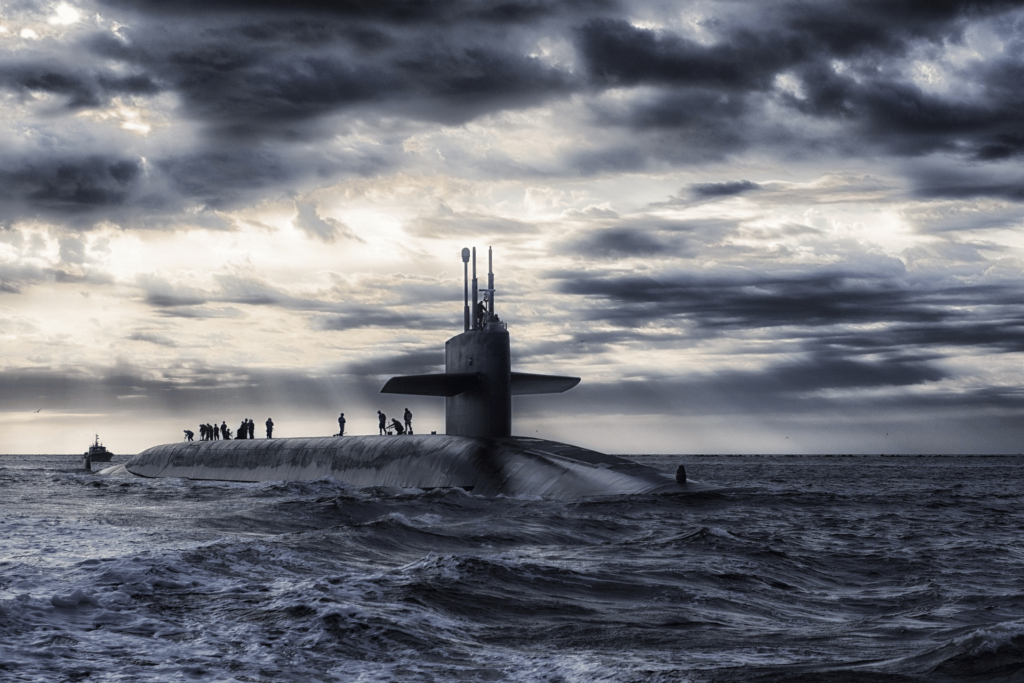Contents [show]
China’s latest effort to rival the United States in maritime military power has hit an unexpected and dramatic obstacle.
In May or June of this year, China’s newest state-of-the-art nuclear submarine sank while docked at the Wuchang shipyard near Wuhan—a city already infamous as the epicenter of the Covid-19 pandemic. The incident has only now been confirmed by American officials, shedding light on a tightly held secret.
The loss of this Zhou-class submarine, noted for its cutting-edge X-shaped stern designed to enhance maneuverability, marks a significant setback for China’s rapidly expanding naval fleet. As Beijing attempts to establish military parity with the U.S., the sinking has raised not only eyebrows but critical questions about the competence of the Chinese military.

A Quiet Catastrophe—And a Covered-Up Crisis
The submarine’s sinking remained under wraps until satellite imagery picked up unusual activity at the shipyard. Thomas Shugart, a senior fellow at the Center for a New American Security and a former U.S. submarine officer, was among the first to notice irregular movements of floating cranes. His observations, shared on social media, hinted at a possible incident involving a submarine but initially left him unsure of the vessel’s nuclear status. It wasn’t until later that the true gravity of the situation became apparent.
“Can you imagine a U.S. nuclear submarine sinking in San Diego, and the government hushes it up?” Shugart mused, expressing disbelief at the secrecy surrounding the event.
His rhetorical question underscores the stark contrast between how such an incident might be handled in an open society versus a regime known for its opacity.
Nuclear Risks and Lingering Questions
What makes this sinking particularly alarming is the uncertainty regarding whether the submarine had nuclear fuel onboard at the time. Although experts consider it likely, Chinese officials have offered no public acknowledgment, nor have there been any indications of environmental safety checks for radiation.
The People’s Liberation Army (PLA), which oversees China’s armed forces, has maintained complete silence on the matter. This raises deep concerns not only about the transparency of China’s military but also about its accountability. As one unnamed U.S. defense official told Reuters, the incident underscores longstanding worries about training standards, equipment quality, and internal oversight within China’s defense industry, which has been notorious for corruption.
A Blow to China’s Expanding Submarine Fleet
As of 2022, China’s submarine fleet included six nuclear-powered ballistic missile submarines, six nuclear-powered attack submarines, and 48 diesel-powered attack submarines. The Pentagon projects this fleet will grow significantly over the next decade, aiming for 65 submarines by 2025 and 80 by 2035. The new Zhou-class submarine that sank represented a pivotal step in China’s goal to expand its nuclear-powered fleet.
However, experts agree that the loss of this submarine will delay China’s plans to achieve maritime dominance. Brent Sadler, a senior research fellow at the Heritage Foundation, told The Wall Street Journal, “The sinking of a new nuclear sub that was produced at a new yard will slow China’s plans to grow its nuclear submarine fleet. This is significant.”
Silence, Secrecy, and Global Ramifications
China’s silence on the submarine disaster has only added to the mystery. A spokesperson for the Chinese embassy in Washington claimed to have no information on the incident, further deepening the veil of secrecy around this catastrophe. For a nation so aggressively pursuing maritime superiority, this mishap not only delays progress but also shines a light on the inherent risks and vulnerabilities lurking beneath the surface of its military ambitions.
In a rapidly evolving global landscape, the sinking of China’s nuclear submarine is more than just an isolated accident; it symbolizes the perils of unchecked ambition and the growing uncertainty in the Asia-Pacific region.
1st reported by: The Guardian.










